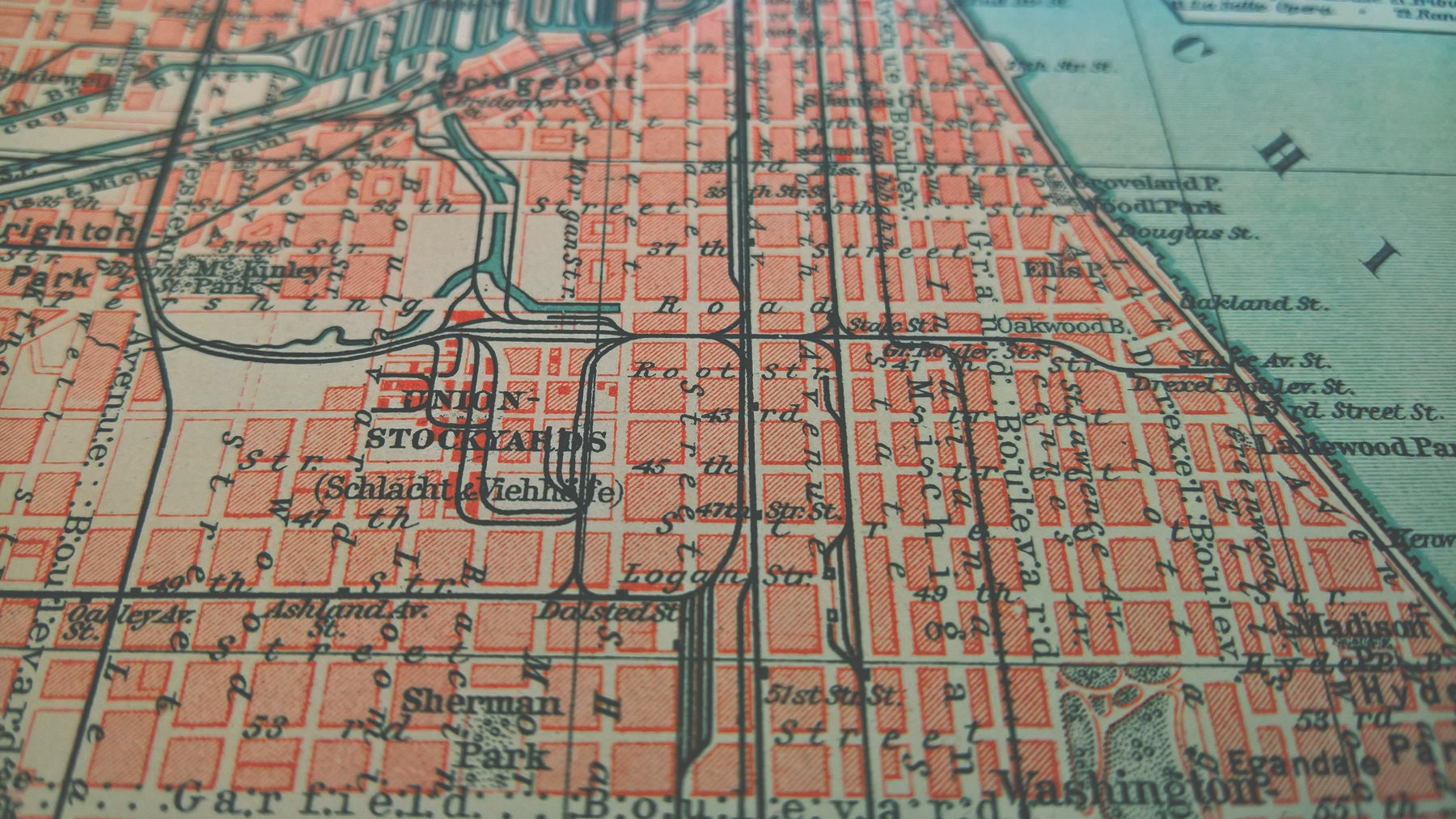

By the mid 1930s, Chicago Communists were deeply rooted in ethnic groups. It has a much lower than average number of people that make it to work in under half an hour. Maps show party offices and places used in demonstrations and mass meetings. In most parts of the country, the majority of commuters get to work in under half an hour. If you are a person that likes walking or biking to work, it will be a comfort for you to know that 60616 has a well above average number of people who do not use a vehicle to commute.
#Map of chicago 1930 code
ZIP code 60616 uses public transportation to get to work more than almost anywhere in the country. While money isn't everything, residents in ZIP code 60616 earn less than in other parts of town.Īs with most parts of the country, vehicles are the most common form of transportation to places of employment. View of the Canterbury L station, Westchester, Illinois, December 1930. The median household income of $44,258 is compared to the rest of the country. Prices for rental property include ZIP code 60616 apartments, townhouses, and homes that are primary residences.įor more information, see Chicago, IL home prices. 2 bedrooms are also common and rent for $1,000+/month. The rent for 1 bedrooms is normally $1,000+/month including utilities. Rentals in 60616 are most commonly 1 bedrooms. So you are less likely to find inexpensive homes in 60616. It is also slightly higher than average compared to nearby ZIP codes. Looking at 60616 real estate data, the median home value of $288,100 is high compared to the rest of the country. Capone built his mob empire in Chicago during the prohibition era of the 1920s, accumulating an estimated 100 million net worth 1. A Chicago home where infamous gangster Al Capone once lived with his. Homes in ZIP code 60616 were primarily built in 1939 or earlier or the 2000s. A Chicago home where infamous gangster Al Capone once lived with his wife, mother and sister is on the market for 109,000. The Census also indicates that there are one or more nursing homes and universities nearby. ZIP code 60616 has a slightly less than average percentage of vacancies. The percentage of children under 18 living in the 60616 ZIP code is small compared to other areas of the country. There are also an extremely large number of single adults and an extremely small number of families. The number of people in their late 20s to early 40s is extremely large while the number of young adults is large. The people living in ZIP code 60616 are primarily Asian. It also has an extremely large population density. ZIP code 60616 is located in northeast Illinois and covers a slightly less than average land area compared to other ZIP codes in the United States. Primary/preferred city: Chicago, IL Unacceptable: Twenty Second Street Stats and Demographics for the 60616 ZIP Code Using any city in the list of unacceptable cities may result in delays. When mailing your package or letter, always include the preferred or acceptable cities. The city for 60616 is usually the name of the main post office. The preferred city may not be the city in which the ZIP is located.
#Map of chicago 1930 movie
The centerpiece was the Harding Theatre, a movie palace completed in 1925 that was demolished in the 1960s, shown on the left side of the street below.The list below includes the cities that the US Post Office accepts for ZIP code 60616. See a high-resolution version of this map. Sawyer Avenue to Kimball Avenue and Diversey Avenue).

Includes views of 2700-2809 Milwaukee Avenue (N. Levy, Arthur & Company map of Logan Square, Chicago, Illinois, 1930. "My guess is that it was made by developers trying to promote that neighborhood has an active retail strip on the North Side," said Peter Alter, the museum's archivist. It's unclear why, but it seems that at the start of the worst economic collapse in American history, Logan Square was a bustling place.
#Map of chicago 1930 series
LOGAN SQUARE - Back at the start of the Great Depression, Milwaukee Avenue in Logan Square was a destination whenever you needed something new to wear.Ĭlothing stores lined the street, based on a map made in 1930 that is in the archives at the Chicago History Museum.Īn electric streetcar went right down the middle of Milwaukee past a series of shoe, clothing and hat stores.


 0 kommentar(er)
0 kommentar(er)
